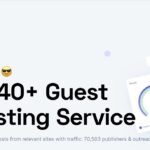
Social Media Marketing
How to Use Social Media for Business
I’m putting my lesson on social media marketing in the advertising course because social media is really an outbound strategy (like advertising is). Even though most social media platforms have a search function, social media is really not an inbound strategy (like SEO is). Just like in my lesson on remarketing (and also what you’ll learn in my email marketing lesson) social media is just another way to keep reminding your existing customers and prospective customers that you exist and are still sitting there waiting for their business. When you post on social media, overtime, your followers/customers/prospective customers start to realize that your business is an expert in its field and eventually they’ll come to the realization that they should buy from your business (or hire your business), or even buy/hire again.
Use Social Media as an Individual or a Business?
Social media marketing works better when you use it as an individual. So if you’re a freelancer, an independent contractor, a realtor, a doctor, or anything where your personal name is your business name, then social media work better for you. This is because people are on social media to interact with other people. They care less about the opinions of a company because they don’t know who at the company is having that thought. It’s all about people!
That being said however, I realize that using social media as an individual is not an option for all other businesses. If you run a business with multiple employees, you’ve got a company logo, etc.- of course you’ll have to use social media branded as your company name (instead of your personal name) and use your company logo (instead of your personal profile pic). Also, if you plan on running any advertising on any social media platforms (including remarketing ads), you will need a company-branded page for that as well.
Smaller Accounts are Better
Another truth I realized by using social media (and I learned this on accident): you don’t need a large following. In fact, a smaller following is actually even better as long as your followers are potential customers or customers from the past. These are the types of followers that spend money with you (or become repeat customers). So-called “influencers” with followings of a million or more might know how to attract a large following of random individuals but are they going to buy from them? They never followed the influencer to follow a business that they’re interested in buying from. They just followed for entertainment. You see it all the time on social media (popular influencers who are famous online but living in their car).
So how did I learn this on accident? I learned it with my personal Facebook account (probably fifteen years ago now). I didn’t realize it at the time, but mixed in with my personal posts, I posted about any business success I had (other marketing tips and ongoings with my business). After a while, my personal friends started to contact me to do work for them (and they started to refer me to others too). Past clients also followed me and it all kept snowballing. Even recently, I just restarted my LinkedIn account (after thinking I was done with it) and soon after I started posting again, a cousin that I’m connected with got reminded that I do what I do and she asked me for help on setting up her website. So social media like Facebook and LinkedIn where you personally know the followers starts working well right away! (and others after enough posts).
Now, I’m not saying don’t post on newer platforms that have come about since Facebook and LinkedIn. Instagram, TikTok, Snapchat and others all have a place too.
What to Post on Social Media
When posting on your business social media accounts, never post flat out ads (except on rare occasions when you’re having a sale). Try to post things that showoff your business without flat out selling. For example, if you’re a construction contractor, take a photo of your finished job and post it (whenever you complete a job). The time that it takes to do a job is about the time you should wait to post again anyway. You can also post things like positive customer reviews (whenever they come in). Every once in a while you can also film a customer’s testimonial on your phone and post it. Or post before and after photos! People love those every once in a while. You can also just post updates on how things are going, news about upcoming products, or how a project is coming along. Get creative! Think of it as your personal reality show about your business. Just don’t blatantly advertise your products or services.
Using Hashtags
Whenever you post anything on your business social media accounts (be it a text post, a photo, or a video) you should always use hashtags. Using hashtags gives your business a chance to be discovered by new people. These people tend to follow your accounts and then eventually they can become customers. So it’s a free way of advertising, opting them in, and then selling in the long run. That’s something called “funnel marketing” (where you pay to run ads, viewers subscribe to an email list, and then they buy after enough emails are sent over time). Well you can do all that for free by using hashtags in your social media posts.
You need to realize though that there is an art to using hashtags. For some platforms like Instagram and Facebook, you want to pack your posts with as many relevant hashtags as you can think of. (Also, keyword: make sure your hashtags are relevant!) And when you choose keywords (like on Instagram for example) you don’t want to use overly competitive hashtags because then no one (other than your existing followers) will see your posts. Try to use hashtags where the competition is in the hundreds of thousands or less. One million and over is too competitive. And that’s an Instagram-only example. Each platform is different. And all those tips don’t apply to the new phenomena in social media platforms, the vertical video apps…
Vertical Video Apps
The vertical video apps I’m referring to are platforms like TikTok, Snapchat, and even traditional platforms that are following suit like YouTube Shorts, Instagram Reels, and Facebook Reels. These platforms are built for attracting an audience. When you post a video on these platforms, you only need to write a very brief description and only use one, super-relative hashtag (and competition of the hashtag doesn’t seem to really matter). The way these platforms work is the algorithm takes over and looks at other metrics that are more important to them than the hashtag (like who watched for how long) and then it goes crazy and shows your video to a lot more users like them. I like to think of this type of social media as similar to television. You’re posting for a new audience to see your posts rather than your own following of potential customers and past customers.
Well that concludes my lessons on advertising and the whole outbound strategy in general. Now we’ll just learn about email marketing…




